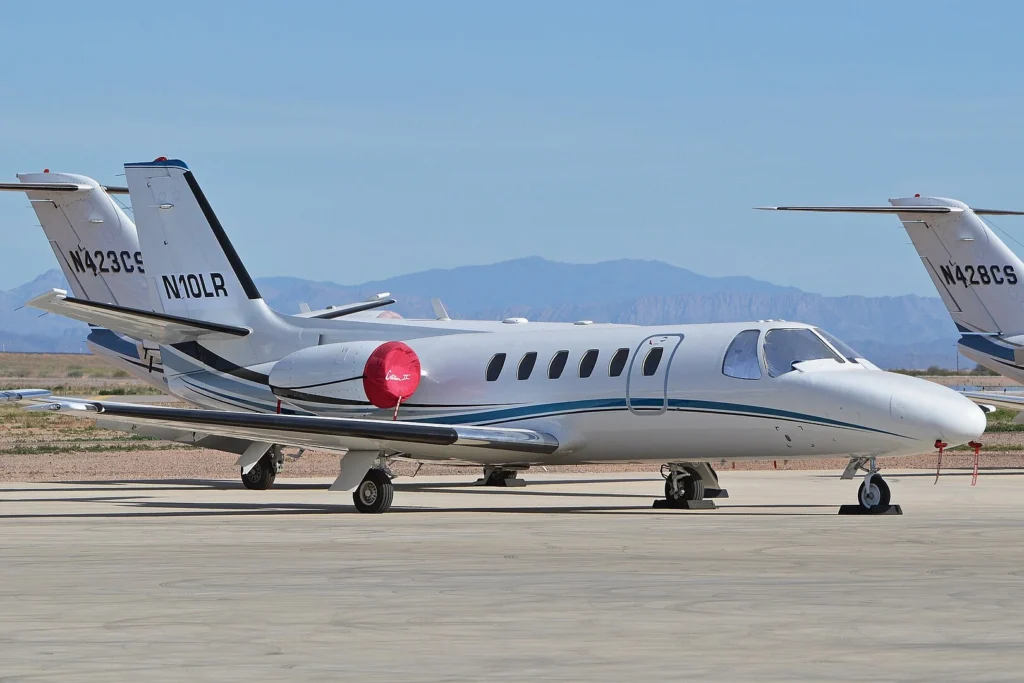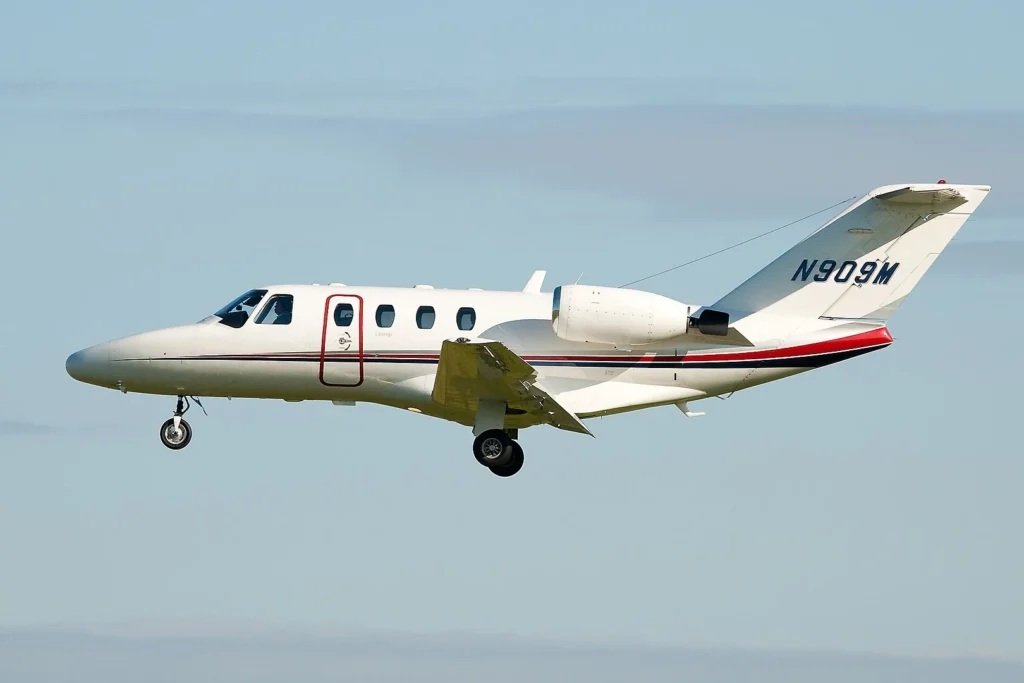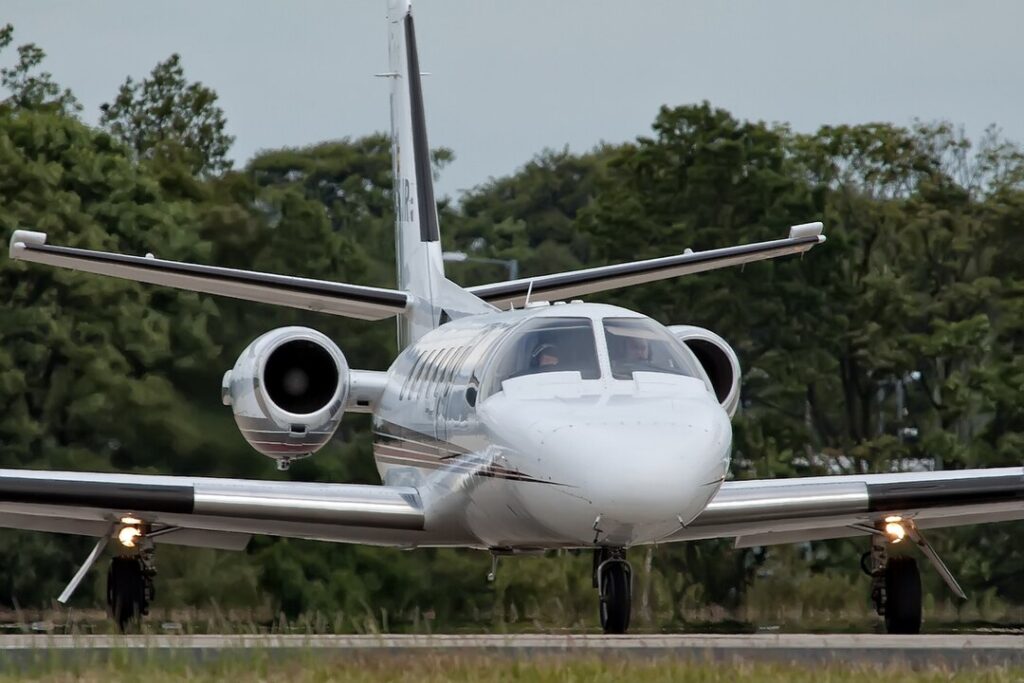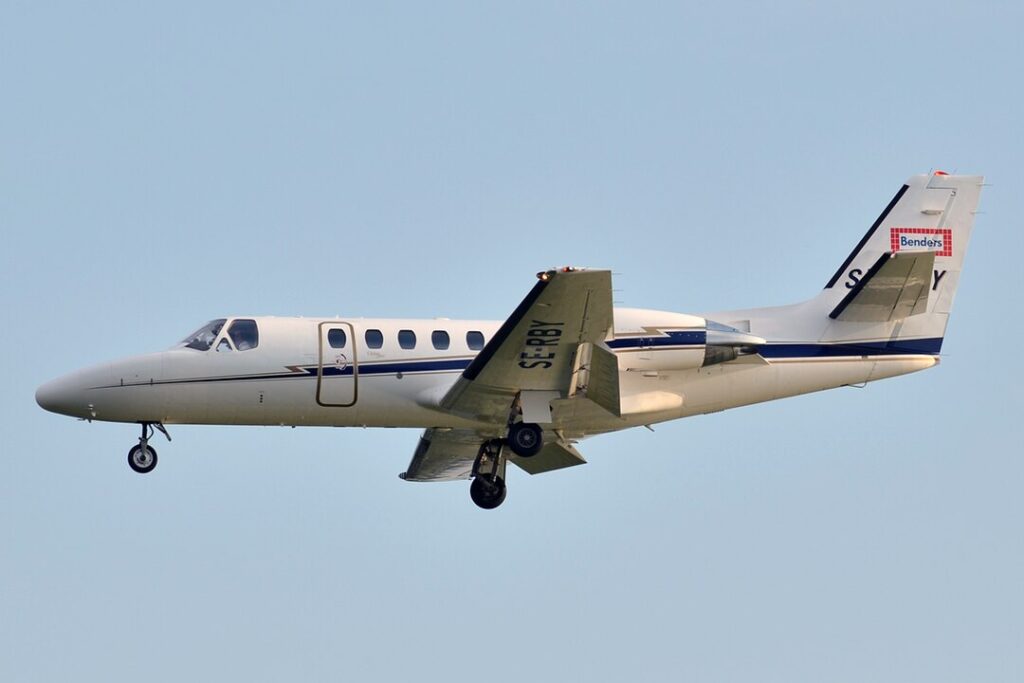
SAN DIEGO- In the early hours of May 22, 2025, a private jet tragically crashed while on approach to San Diego’s Montgomery Gibbs Executive Airport.
The accident occurred under poor weather conditions, and chilling air traffic control audio reveals the pilot’s calm demeanor until the final moments.
The Cessna Citation II, carrying six people, struck a residential area just two miles from the runway. Early investigations suggest that fatigue and limited landing alternatives may have played a role in the crash.
 Photo: By Alan Wilson – Cessna Citation II/SP ‘N10LR’, CC BY-SA 2.0, https://commons.wikimedia.org/w/index.php?curid=33925681
Photo: By Alan Wilson – Cessna Citation II/SP ‘N10LR’, CC BY-SA 2.0, https://commons.wikimedia.org/w/index.php?curid=33925681Private Jet Crashed in San Diego
On May 22, 2025, at approximately 3:45 AM, a 1985 Cessna Citation II, registered as N666DS, crashed into the Murphy Canyon neighborhood, a military housing area near Montgomery Gibbs Executive Airport in San Diego.
The jet, on approach to runway 28R, struck power lines, clipped a house, and crashed, damaging 10 homes, one completely destroyed.
Six people were onboard, including Dave Shapiro, a 42-year-old music executive, pilot, and owner of the aircraft through Daviation LLC, and Daniel Williams, a former drummer for The Devil Wears Prada.
Six presumed killed when small plane crashes into military homes in Murphy Canyon neighborhood in San Diego pic.twitter.com/LIwKSYRh7G
— Nelvin Cepeda (@NelCepeda) May 22, 2025
All are presumed dead, with eight ground injuries reported but no ground fatalities. The National Transportation Safety Board (NTSB) and Federal Aviation Administration (FAA) are investigating.
The aircraft departed Teterboro Airport, New Jersey, at 11:15 PM EDT on May 21, stopped for 45 minutes to refuel at Colonel James Jabara Airport in Wichita, Kansas, and continued to San Diego, a total flight time of nearly eight hours.
Dense fog with half-mile visibility and a 200-foot cloud ceiling complicated the approach.
 Photo: By bomberpilot – DSC_4192Uploaded by High Contrast, CC BY-SA 2.0, https://commons.wikimedia.org/w/index.php?curid=26686375
Photo: By bomberpilot – DSC_4192Uploaded by High Contrast, CC BY-SA 2.0, https://commons.wikimedia.org/w/index.php?curid=26686375Pilot’s Final Words
Air traffic control (ATC) recordings, published by VASAviation, provide a haunting insight into the pilot’s final communications.
The pilot, identified as 42-year-old Dave Shapiro, a music executive and experienced aviator, was calm and composed throughout the exchange.
He requested an updated weather report, noting, “I want to see what I’m in for here.” Upon hearing the forecast, he responded, “Alright, doesn’t sound great, but we’ll give it a go.”
As the situation worsened, he asked about alternative airports, but conditions at nearby facilities offered no significant improvements.
In his final communication, he said, “We’ll hopefully not see you… But we might have to.” These words reflect both professionalism and the pressure of decision-making under fatigue and deteriorating conditions.
Shapiro was not a commercial pilot but was highly involved in aviation. He owned a flight school and had previously worked as an instructor.
Among the passengers was former musician Daniel Williams, who shared photos from the plane on social media shortly before departure.
 By Mark Winterbourne – Flickr: EC-KJR, CC BY 2.0, https://commons.wikimedia.org/w/index.php?curid=15585773
By Mark Winterbourne – Flickr: EC-KJR, CC BY 2.0, https://commons.wikimedia.org/w/index.php?curid=15585773Decision Making Under Pressure
The sequence of events indicates the possible influence of fatigue, commonly referred to in aviation as “get-there-itis.”
The flight involved nearly eight hours of overnight flying on a small jet, with limited rest opportunities.
Unlike airline pilots, business jet crews often operate on irregular schedules and may not follow strict rest requirements.
The crew’s decision to continue to San Diego despite worsening weather may have been shaped by a desire to complete the trip.
While ATC audio shows that the pilot actively considered alternatives, all options presented similar visibility issues.
The timeline and flight pattern align with scenarios where fatigue impairs judgment, situational awareness, and reaction time, factors that the National Transportation Safety Board (NTSB) is likely to explore during the investigation.
It looks like Daniel Williams, former drummer for The Devil Wears Prada, was on board the plane that crashed in San Diego this morning. Absolutely heartbreaking. pic.twitter.com/Roc5zx78rE
— Cody Hanlon (@CodyLNG) May 22, 2025
This tragic accident echoes several previous incidents where human factors like exhaustion and pressure to land played a decisive role.
Until the investigation concludes, speculation remains limited, but aviation safety advocates will closely examine how these dynamics influenced this flight’s outcome.
 Photo: By Anna Zvereva from Tallinn, Estonia – Bluelink Jets, SE-RBY, Cessna 550 Citation Bravo, CC BY-SA 2.0, https://commons.wikimedia.org/w/index.php?curid=40219681
Photo: By Anna Zvereva from Tallinn, Estonia – Bluelink Jets, SE-RBY, Cessna 550 Citation Bravo, CC BY-SA 2.0, https://commons.wikimedia.org/w/index.php?curid=40219681Conclusion
The crash of the private jet, Cessna Citation II, in San Diego underscores the inherent risks of flying under fatigue and poor weather.
The pilot’s steady voice in the ATC audio belies the complexity and pressure faced in the cockpit.
As investigators work to determine the exact cause, early evidence points toward a mix of low visibility, pilot exhaustion, and limited alternative landing options.
Stay tuned with us. Further, follow us on social media for the latest updates.
Join us on Telegram Group for the Latest Aviation Updates. Subsequently, follow us on Google News
Bell 206 Helicopter Crash in Hudson River Today, 6 Presumed Dead
The post Six Dead in Plane Crash at San Diego, Pilots and ATC Audio Reveals Details appeared first on Aviation A2Z.















